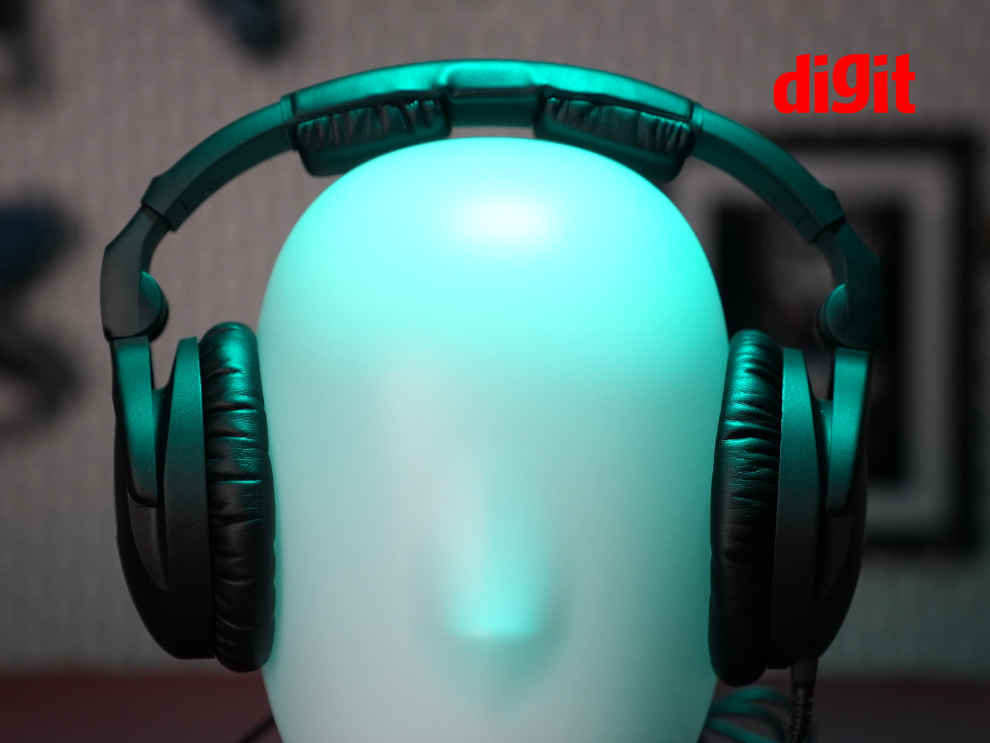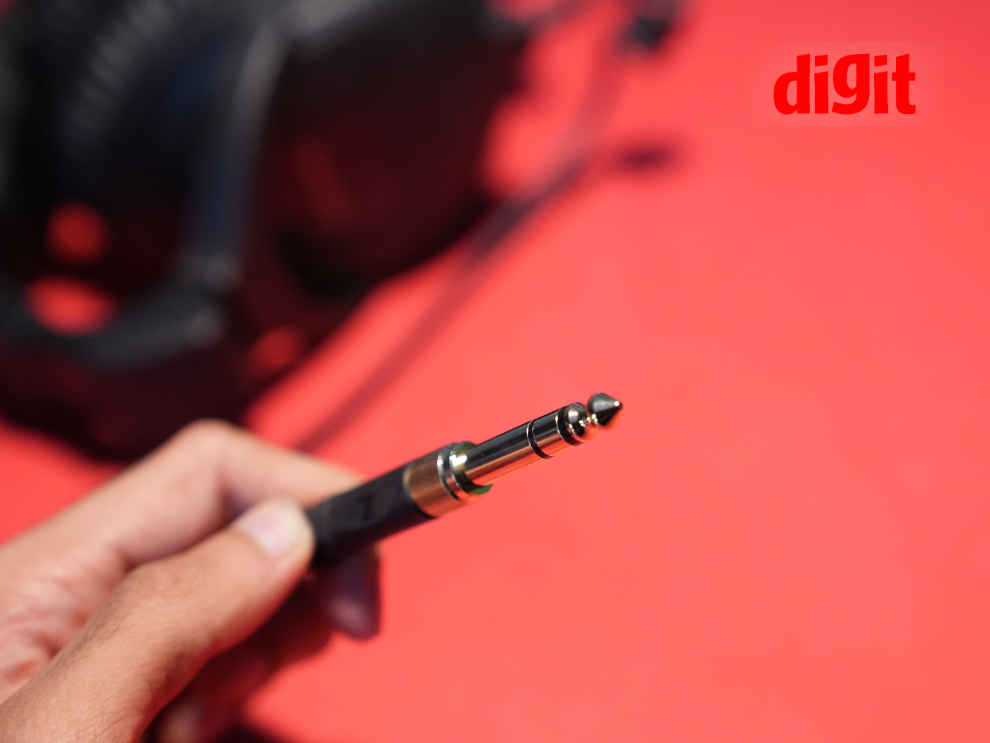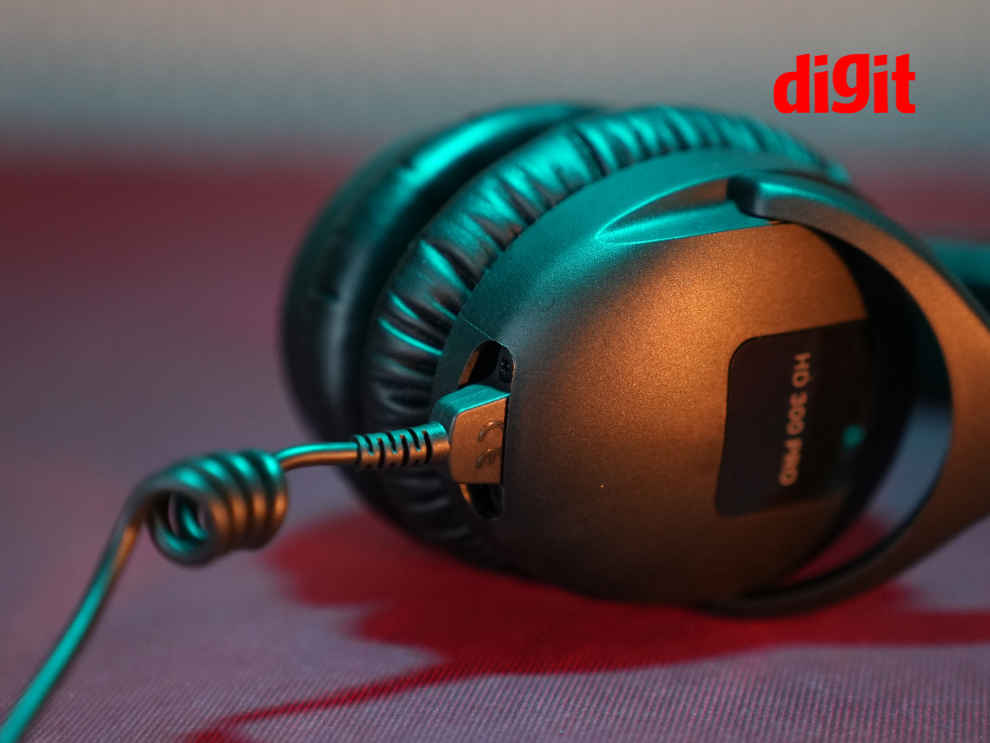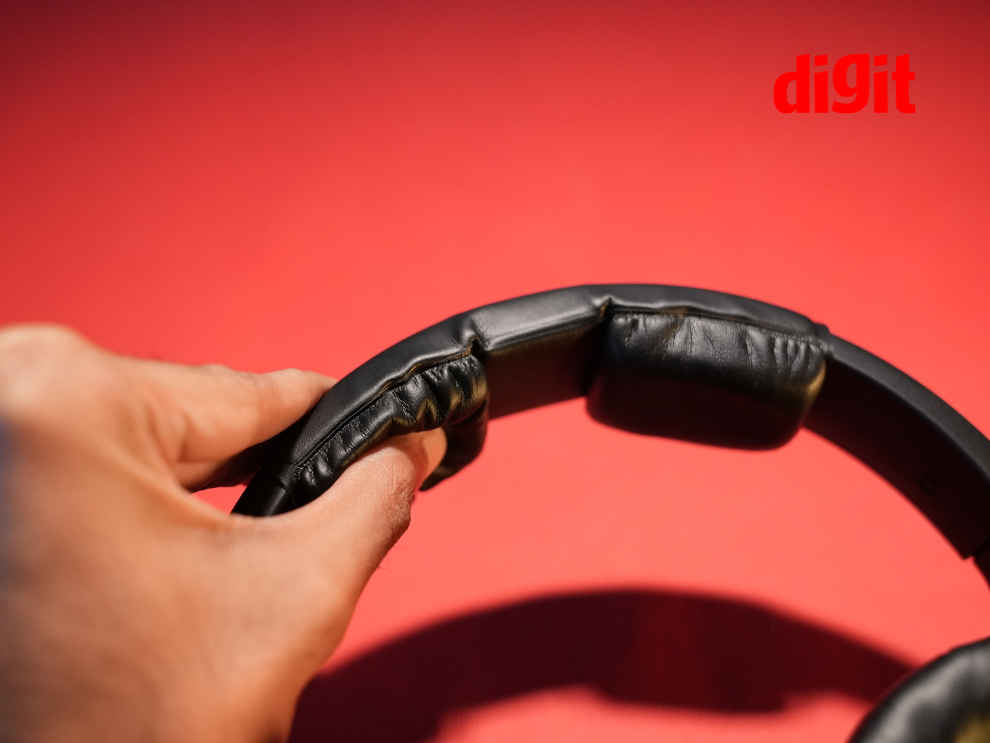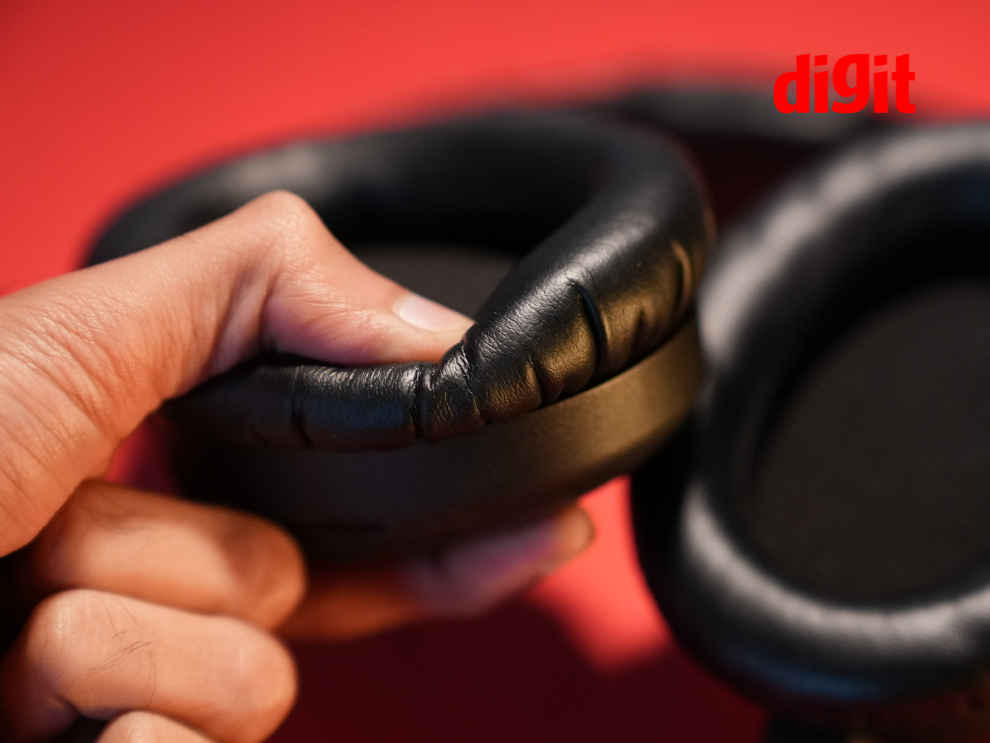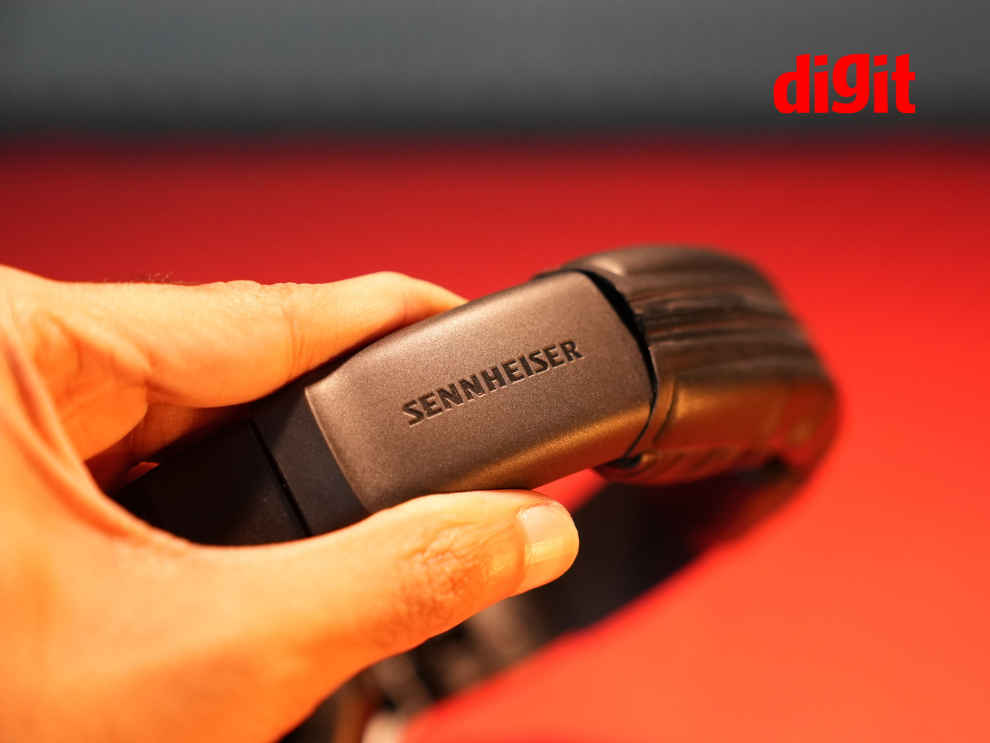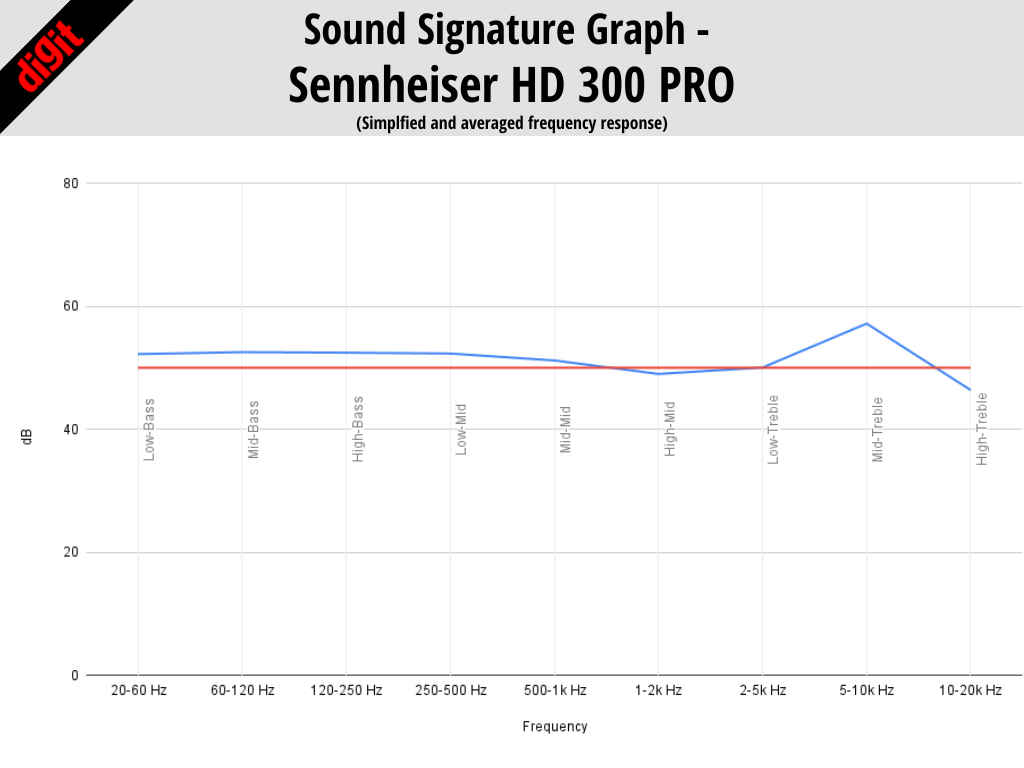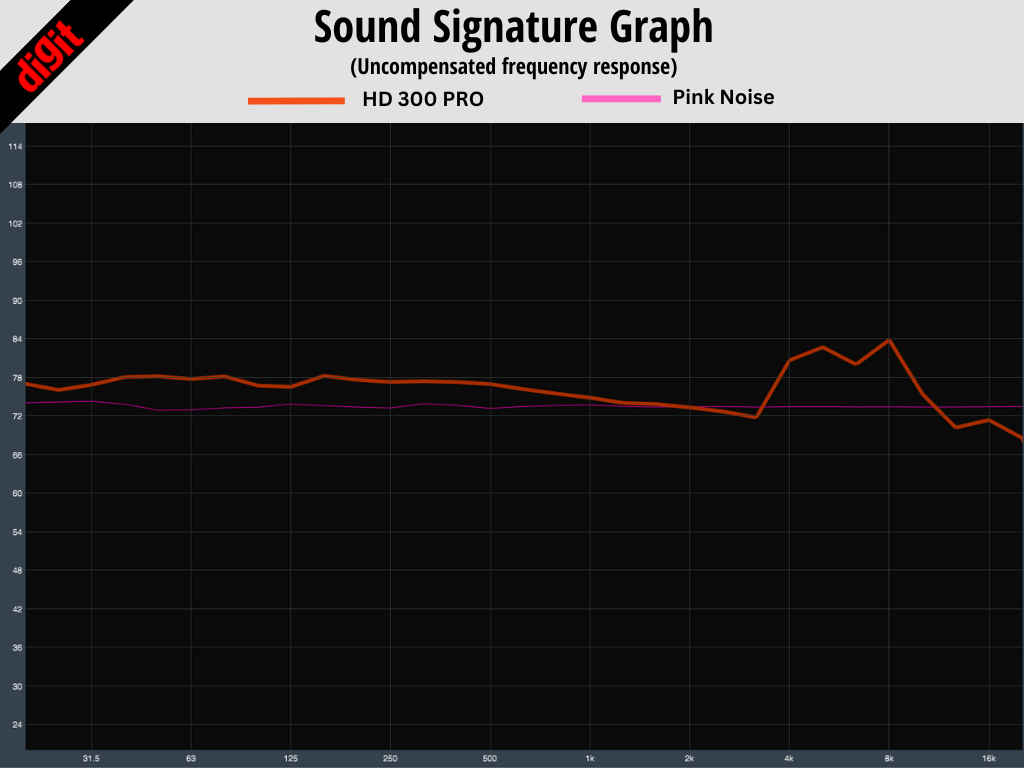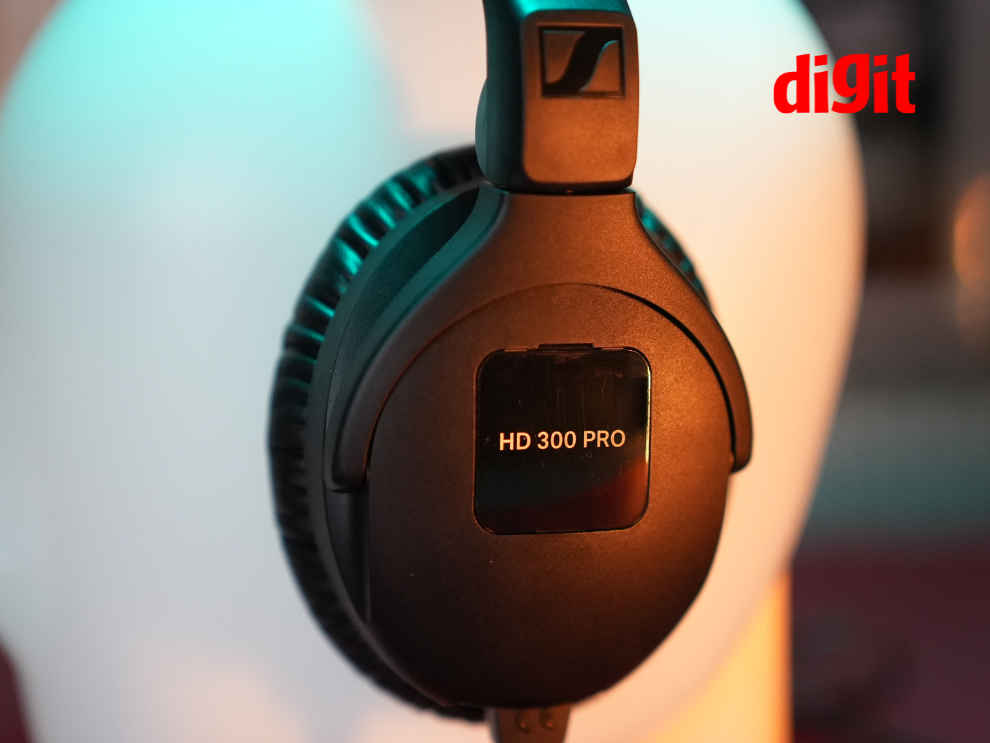Sennheiser HD 300 PRO Review : For the professionals on the go
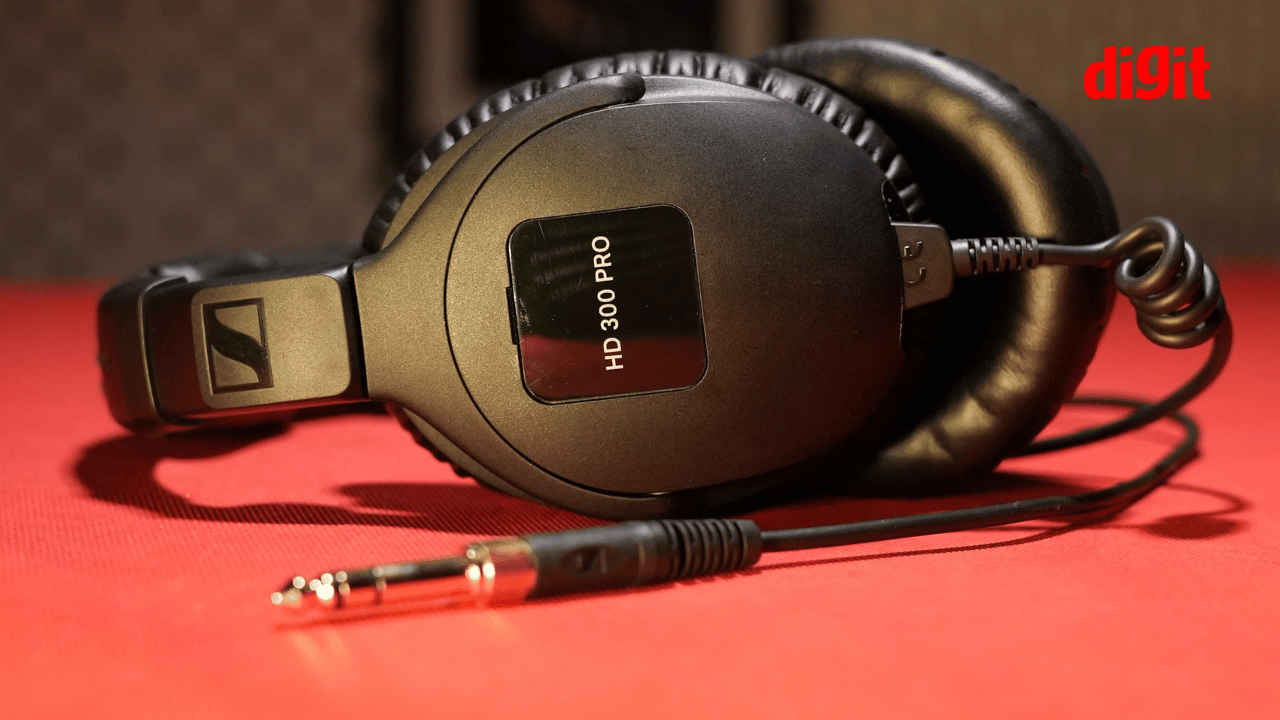
- Excellent design and build quality, Adequate padding on the earcups and headband,
- Cable not easily swappable, Boost in the highs introduces sibilance
Should you go for it? Yes. If you are a professional working in the music production industry and are always on the go. The reasoning is clear. The headphones sound great, are portable, and have a closed-back design, minimising sound leakage and adding great isolation. However, if you are someone who mostly works out of a studio, then I’d say pay the price difference and go for the Sennheiser HD 400 PRO.
The professional audio space has become increasingly competitive in the last few years. With more and more brands expanding their portfolios across price brackets, finding the perfect pair of headphones for your use that offer the best balance between price, performance, and quality are hard to come by. Most pairs, especially in the sub-₹20,000 range, tend to tick two of the three boxes.
So, when the Sennheiser HD 300 PRO headphones showed up at the Digit Test Centre, I was curious to see how many boxes they would tick. They are touted to be one of the best that Sennheiser has to offer, with their offerings capping out with the PROtect variant of the same headphones that, according to the brand, come equipped with ActiveGard, which ensures that your ears are protected if the Sound Pressure Levels (SPL) levels are above 110 dB.
After using the Sennheiser HD 300 PRO headphones daily in the office for 15 days, I had some observations. Some good, and some not so good. Here’s the full account of my experience of using these headphones and how they fared when I put them through our rigorous testing process.
Sennheiser HD 300 PRO: Build, Design, and Comfort
The Sennheiser HD 300 PRO headphones scream class and quality as soon as you pull them out of the box. The build is completely plastic, but the plastic used is of awesome quality. The headphones are built well and almost to perfection. My fellow audio reviewer, Dhriti, put these through her signature ‘creaking test’, and these headphones did not make the slightest sound.
The headband of these headphones is also made of plastic, which in the beginning did not instil a lot of confidence in me. However, after the ‘creaking test’ and daily usage (considering the fact that my head is on the slightly large side), all my inhibitions about the headphones’ durability were knocked out of the park. The cable also has thick shielding around it, and the 3.5 mm jack is gold-plated. Even the quarter-inch adapter has gold plating on it.
While it has been proven that gold plating does not have much effect on the quality of sound that the headphones are outputting, it does have an effect on the durability of the connectors. Gold protects against corrosion, which is a viscous enemy of your headphones. So, having gold plating on the connectors of your headphones is always beneficial.
Coming back to the cable, it is not swappable. When you look at the connection point between the headphones and the cable, the connector is screwed onto the headphones. Because of this, you will need to get them serviced by Sennheiser if your cable gets screwed by any chance. If you are handy with screwdrivers, you can attempt to replace the cables yourself. But would you want to risk breaking an expensive pair of headphones?
As for the cushioning on the earcups and the headband, the Viscoelastic material used by Sennheiser makes wearing the headphones extremely comfortable. I wear glasses and had these headphones on for at least 7 to 8 hours a day, and there was hardly any discomfort that I experienced. Neither did the headband dig into my skull, nor did the earcups cause pain around the area where they sit.
The swivel on the earcups might seem limited at first. But once you start using the headphones, you will know how great it is. The limited range of motion on the earcups does more good than harm, making sure the headphones sit well on your head and do not fall off, even when you decide to headbang to your latest creations.
One thing that I loved about these headphones is that not only the cushioning on the earcups but also the one present on the headbands is replaceable. Having easily swappable parts, which we know for a fact are going to degrade, is always nice.
There’s not much to talk about the design of these headphones. They have the quintessential studio look, and you would not like to wear them out in public unless you want everyone to know what your hobby is or what profession you practice. The earcups and the headband have a matte finish, with two glossy squares present on both earcups. There’s embossed Sennheiser branding at the base of the headband and general labelling all around. Nothing too fancy to write about.
Being wired headphones meant for studio use, these do not have any fancy features that we see on consumer-grade headphones. If you get the PROtect variant, there’s ActiveGard which I already spoke about earlier. Now, let’s move on to the performance part of the review.
Sennheiser HD 300 PRO: Performance
When it comes to performance, these headphones are directly competing with their 400 series cousins, the Sennheiser HD 400 PRO, which are just ₹2,000 more than these headphones. Given that I had tested the Sennheiser HD 400 PRO, the winner of our Best Buy Awards last year, I had a fair idea of what to expect from these headphones. However, I was also confused as to why Sennheiser would have two headphones in the same price bracket? Let’s keep the answer to that question for the last bit, and for now, concentrate on the sound signature graph of the 300 PRO headphones.
As you can see, the sound signature is pretty neutral for the most part. All the way 20 Hz to 1,000 Hz, the line is parallel to our baseline and benchmark reading of the pink noise. But, as soon as we cross the 1,000 Hz mark, there’s a slight dip, followed by a massive spike in the Low to High Treble range (i.e. between 3 kHz and 10 kHz range). This is a very normal thing in Sennheiser’s professional-grade headphones. However, in this case, it the boost was much more than expected. There also a dip around 1 kHz range, which was there in these headphones as well, but not that significant.
Because of the massive boost in frequencies, we get sibilance. It is the over-amplification of the sounds of the letters ‘S’ and 'T'. And, if that happens over a prolonged period of time, people tend to experience fatigue with some extreme cases ending with headaches as well. But, if you want, you can use a third-party EQ and tone down that boost to get rid of the sibilance.
Coming to day to day music listening and content consumption. In songs like Selkies: The Endless Obsession by Between the Buried and Me, all the quintessential metal instruments registered their presence with authority, with each one being distinguishable from the rest. The bass response was a bit muted, so bass lovers, stay away. At the Test Centre, we play Uptown Funk by Bruno Mars as a standard to test the bass response and the punchiness of the bass. And, with these headphones, the bass was there, and anyone who loves neutral sound would be able to pick that out instantly. However, if you are looking for that thump that many consumer headphones have, you won’t get that here.
These headphones are closed back, which in most cases, limits the sound stage of the headphones. However, in these headphones, the sound stage could be compared to some open-back headphones out there. Some is the keyword.
There is no Active Noise Cancellation on these headphones, but the passive isolation works wonders. I would listen to tracks at around 30 per cent volume in the office, and my colleagues would actually need to tap me on my shoulders to get my attention. And, given that the isolation is great, thanks to the fit, the sound leakage is also minimal. Until I cranked the volume up to 50 per cent, there was no leakage. Past the 60 per cent mark, there is a considerable leak. However, I cannot think of any scenario where you’d listen to these headphones past the 25-30 per cent volume mark for extended periods. Especially if you are in a studio setting where there’s practically no background noise.
Being the gamers that we are, I also played some Counter-Strike: Global Offensive, TrackMania, Guild Wars 2, and F1 2022 when using these headphones. And, from the moment I got into my first game of Counter-Strike, it was evident that these are not meant for gaming. Although, once I got used to the rather hollow sound of these headphones, I actually loved the way they sounded. But, that is purely my choice of sound, and for most gamers out there, these are not the headphones to go for.
Sennheiser HD 300 PRO: Verdict
So, let’s address the question with which I opened the performance section – Why release the HD 300 PRO, when you already have the HD 400 PRO out there? That too, at a price that is just about ₹2,000 more than these headphones (at the time of writing).
From what I could gauge, having used both the headphones is, they do not target the same audience, despite being in the same space. The Sennheiser HD 400 PRO headphones have an open-back design, with a higher frequency range (which explains the price), and are meant for professionals working in a closed space. They are not as portable as the 300 PRO and the open-back design leads to lesser isolation and more leaking of audio.
With the HD 300 PRO you get a more portable design with a closed-back design which has better isolation and less sound leakage compared to the HD 400 PRO. The only trade-off is the narrower frequency range, but my assumption is that if you are on the go, you are not gunning for perfection. 99.99 per cent of what you could achieve in a studio environment would be ideal. And, that is what you get with the Sennheiser HD 300 PRO.
Should you go for it? Yes. If you are a professional working in the music production industry and are always on the go. The reasoning is clear. The headphones sound great, are portable, and have a closed-back design, minimising sound leakage and adding great isolation. However, if you are someone who mostly works out of a studio, then I’d say pay the price difference and go for the Sennheiser HD 400 PRO.
Sennheiser HD 300 PRO Key Specs, Price and Launch Date
| Release Date: | |
| Market Status: | Launched |
Satvik Pandey
Satvik Pandey, is a self-professed Steve Jobs (not Apple) fanboy, a science & tech writer, and a sports addict. At Digit, he works as a Deputy Features Editor, and manages the daily functioning of the magazine. He also reviews audio-products (speakers, headphones, soundbars, etc.), smartwatches, projectors, and everything else that he can get his hands on. A media and communications graduate, Satvik is also an avid shutterbug, and when he's not working or gaming, he can be found fiddling with any camera he can get his hands on and helping produce videos – which means he spends an awful amount of time in our studio. His game of choice is Counter-Strike, and he's still attempting to turn pro. He can talk your ear off about the game, and we'd strongly advise you to steer clear of the topic unless you too are a CS junkie. View Full Profile

